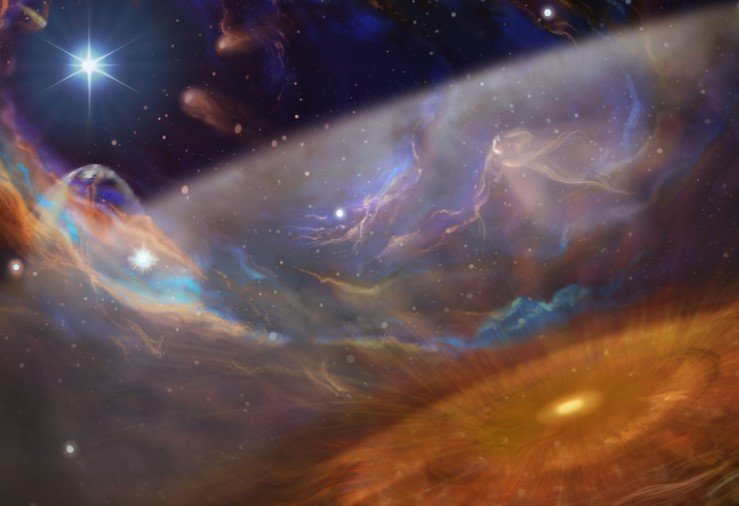A cosmic light show from 1,500 light-years away offers a hauntingly beautiful look at the final chapters of a star’s life.
The James Webb Space Telescope just delivered what might be one of its most mesmerizing images yet: an intricate and oddly-shaped planetary nebula known as NGC 1514. At the center of this dramatic, glowing gas cloud lies a binary star system—one star fading into a white dwarf, the other continuing to orbit closely in what looks like a deep-space dance of death and rebirth.
A Closer Look at the Shattered Sphere
The new image, released by NASA, reveals the most detailed view yet of this peculiar celestial structure. It’s not the first time NGC 1514 has been spotted—we’ve known about it since 1790—but this time, we’re seeing it in a way never before possible.
Through the eyes of Webb’s mid-infrared sensors, thick gas and dust no longer hide its finer details. What we see instead is a crushed hourglass-shaped nebula, encircled by two dazzling rings and a glowing center that looks like something straight out of science fiction.

What’s Really Going On Here?
This isn’t just pretty for the sake of being pretty. There’s some wild science unfolding in this ancient cloud of gas.
Two stars are at the heart of this story. One of them has exhausted its nuclear fuel. It’s collapsing in on itself, puffing out layer after layer of stellar material. The other star—its stellar partner—might have once gotten dangerously close, stirring the gas cloud into its unique, asymmetric shape.
Jones from the Institute of Astrophysics on the Canary Islands explains it like this: “When this star was at its peak of losing material, the companion could have gotten very, very close. That interaction can lead to shapes that you wouldn’t expect.”
In other words, the strange structure of NGC 1514 might be less about dying quietly and more about a chaotic, gravitational tug-of-war.
What Makes This Nebula Special?
Unlike the stereotypical spherical nebulae we often see in textbooks or sci-fi media, this one breaks the mold. It’s lopsided. Warped. Textured in a way that makes it look alive, like it’s moving—even though it’s thousands of years old.
Here are a few details that make NGC 1514 stand out:
-
Distance: About 1,500 light-years from Earth.
-
Shape: More crushed hourglass than smooth sphere, with visible rings.
-
Origin: Formed from the outer layers of a dying star.
-
Core: Contains a white dwarf and a binary companion.
-
Age: The visible structure has evolved over at least 4,000 years.
The image shows what looks like cosmic smoke rings, wrapping around the star like it’s trying to hang on to its last breath. And it’s this level of detail that reminds astronomers just how much we’ve been missing in the dark.
Webb’s Magic Touch: Infrared Vision
So why does Webb see what others couldn’t? It’s all about the light—specifically, infrared light. While visible light gets easily blocked by dust, infrared can slip through, revealing what’s been hidden for centuries.
NASA says this is the most detailed mid-infrared view of a planetary nebula to date. And it’s not just stunning. It’s useful. By peering into the gas layers and picking apart the spectral data, astronomers can analyze the composition, temperature, and history of this cloud.
And the data? That’s gold. It helps us understand the fate of our own sun—which, yes, will also end up like this in a few billion years. Earth won’t be around to see it, but Webb’s view lets us peek ahead in the universe’s timeline.
A Stellar Death That Sings With Light
Planetary nebulae are, at their core, tragic. A star burns bright for billions of years, only to collapse and shed its outer shell. But what’s left behind is anything but dull. The white dwarf continues to emit radiation, lighting up the escaping gas and shaping it into a glowing beacon.
For astronomers, NGC 1514 is a laboratory of cosmic forces—binary interactions, stellar winds, radiation pressure, gravity, and more. For the rest of us, it’s simply breathtaking.
